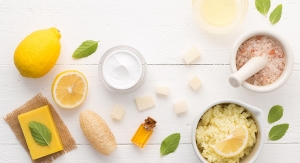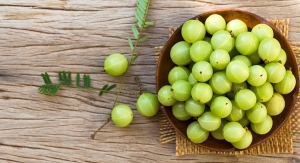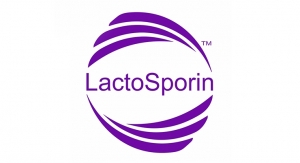09.03.19
Colgate to Acquire Skin Care Business from Filorga for $1.69 Billion
As part of its strategy to focus on its higher-margin oral care, personal care, and pet nutrition businesses, and expanding its portfolio in premium skin care, Colgate-Palmolive Company has agreed to acquire the Laboratoires Filorga Cosmétiques (Filorga) Skin Care Business for about $1.69 billion (€1.5 billion).
Filorga is a premium anti-aging skin care brand focused primarily on facial care. Originally founded in France in 1978, the brand is now sold in over 60 countries with its largest markets being France, Italy, Spain, and Greater China. The Filorga brand leverages a multi-channel distribution strategy across pharmacy, online, specialty stores, and travel retail.
“Filorga is a strong, premium-priced brand with distinctive positioning that fits well within our long-term personal care growth strategy,” said Noel Wallace, Colgate’s president and CEO. “We are excited that this acquisition will add a high-growth, profitable, global skin care asset to the Colgate portfolio with the opportunity to drive continued growth through expanded distribution and awareness. This acquisition also provides Colgate entry into the fast-growing and sizeable travel retail channel, particularly in Asia.”
The transaction will be financed with a combination of debt and cash and is currently expected to close in the third quarter of 2019. The acquisition is conditioned upon receipt of regulatory approvals in certain countries.
Study Reveals Protein that Activates Hair Growth
A study published in STEM CELLS has identified a possible new way to regrow hair. The research demonstrated how extracellular vesicles (EVs), isolated from stimulated dermal fibroblasts, promote hair growth via their secretion of the protein norrin—and how norrin is a key player in growing hair. The discovery could lead to numerous therapeutic treatments for alopecia (hair loss), the researchers said.
Alopecia impacts millions of people, not only affecting psychological well-being, but also endangering certain skin functions. Currently available treatments, however—including drugs and transplants—have numerous limitations, leaving scientists searching for other solutions.
Dermal papilla cells, found at the root of a hair follicle, are of interest in this regard as they control the growth and regeneration of the follicles. In part, this is achieved through cell-to-cell communication. Some scientists believe this communication occurs via extracellular vesicles (EVs) secreted by the surrounding cutaneous (skin) cells.
While numerous functions have been attributed to EVs in physiology and pathology, few studies have examined their impact on hair follicles. What scientists understand about EVs and hair is that EVs from dermal papilla cells are able to stimulate the proliferation and migration of follicular keratinocytes (the cells responsible for forming tight junctions with the nerves of the skin). One recent study on mice showed that EVs from bone marrow-derived mesenchymal stem cells or dermal papilla activated hair growth in the animals, but neither the underlying molecular mechanism nor the mediator molecule(s) behind this were identified.
In the study published in STEM CELLS, a research team led by Daniel Aberdam, PhD, of INSERM and the Université de Paris, decided to tackle these questions. In particular, they wanted to investigate the role of EVs isolated from stimulated human dermal fibroblasts in activating dermal papilla cells to promote hair growth.
The results of their study showed how activated dermal fibroblasts secrete specific EVs (st-EVs) that enhance hair follicle growth ex vivo. They demonstrated that st-EVs stimulate dermal papilla cells to secrete norrin, which in turn activates follicular keratinocytes. Norrin is known to play a role in Wnt/b-catenin signaling, which previous studies have shown to regulate hair growth.
“Remarkably, norrin-specific receptor, called Frizzled4, is absent from follicular keratinocytes. We showed here that dermal fibroblast EVs carry at their surface Frizzled4 to allow norrin signaling and hair growth,” Aberdam said. “As such, our study identifies dermal fibroblast EVs as efficient activators of dermal papilla cells, and norrin as a novel player in regulating hair growth in normal and pathological conditions.”
Sunscreen & Cosmetic Compound May Harm Coral by Altering Fatty Acids
Although sunscreen is critical for preventing sunburns and skin cancer, some of its ingredients can be harmful to ocean-dwelling creatures. In particular, sunscreen chemicals shed by swimmers are thought to contribute to coral reef decline. Now, researchers reporting in the American Chemical Society’s (ACS) journal Analytical Chemistry said that one such chemical, octocrylene (OC), which is also in some cosmetics and hair products, accumulates in coral as fatty acid esters that could be toxic to the marine organism.
According to several research studies, up to 14,000 tons of sunscreen end up in the world’s oceans every year. To protect coral reefs, the state of Hawaii banned sunscreens containing oxybenzone and octinoxate, two chemicals known to harm coral, with the law set to take effect in January 2021. Another substance, OC, can be found in cosmetics such as hair sprays and conditioners, as well as sunscreens. Although OC is toxic to coral at high concentrations, Didier Stien, Philippe Lebaron, and colleagues wondered how it would affect coral at levels more likely to be encountered in the environment.
To find out, the researchers exposed coral to OC at various concentrations for a week. They found that the coral was sensitive to the compound at concentrations of 50 micrograms per liter and greater, which is about 10 times higher than levels measured in the ocean. OC accumulated in the coral as fatty acid conjugates, which may interfere with the organism’s metabolism. The team also detected increased levels of acylcarnitines in the exposed corals, which are produced under conditions of abnormal fatty acid metabolism and mitochondrial dysfunction. The researchers said that levels of OC in the ocean might have been underestimated previously because these measurements did not take into account OC fatty acid esters.
Natreon’s Shilajit Extract Shown to Improve Skin Health in Adult Women
A randomized, double-blind, placebo controlled clinical study from Ohio State University Wexner Medical Center found that PrimaVie, a patented shilajit extract from Natreon, improved skin perfusion in healthy adult women. Results were published in the Journal of the American College of Nutrition.
PrimaVie is an organic humic substance containing urolithins, fulvic acid, and micro minerals. Natreon said it’s committed to continued scientific investment and research focused on the beauty-from-within and skin health categories. This marks the 10th clinical trial published by Natreon for its “biome optimized” shilajit extract.
The present study aimed to evaluate the effects of oral shilajit supplementation on skin gene expression profile and micro perfusion in healthy adult females. The study design comprised six total study visits, including the baseline visit (V1), and a final 14-week visit (V6) following shilajit supplementation (125 or 250 mg).
A skin biopsy of the left, inner-upper arm of each subject was collected at visits two and six for gene expression profiling using Affymetrix Clariom D Assay. Skin perfusion was determined by MATLAB processing of dermascopic images. Transcriptome data were normalized and subjected to statistical analysis. The differentially regulated genes were subjected to Ingenuity Pathway Analysis (IPAV R). The expression of the differentially regulated genes identified by IPAV R were verified using real-time polymerase chain reaction (RT-PCR).
Supplementation with shilajit for 14 weeks was not associated with any reported adverse effect within this period. At the higher dose (250 mg), shilajit improved skin perfusion when compared to baseline or the placebo. Pathway analysis identified shilajit-inducible genes relevant to endothelial cell migration, growth of blood vessels, and ECM which were validated by quantitative RT-PCR analysis.
This work demonstrated that oral shilajit supplementation induced genes relevant to endothelial cell migration, collagens and other extra-cellular matrix (ECM) proteins and growth of blood vessels, and improved skin micro perfusion in healthy adult women.
“This study adds to the growing clinical evidence for all the anti-aging benefits of PrimaVie shilajit,” said Sanni Raju, CEO of Natreon. “Along with its earlier clinical studies, it’s proven that PrimaVie shows highly significant upregulations of genes coding collagens (especially, COL1A1) and ECM proteins in skeletal muscle, such effect being synergistic with exercise. It also has shown to improve testosterone levels, mitochondrial function (increased ATP levels), endothelial function, and cardiovascular health in healthy subjects.”
Tomato Phytonutrients Found to Support Skin’s UV Resilience
Supplementation with Lycoderm, a carotenoid-rich tomato nutrient complex from Lycored, allows for the proper nourishment of body and skin and also balances skin’s response to UV rays, according to a study published in the peer-reviewed medical journal, Skin Pharmacology and Physiology.
This research supports increasing evidence that skin wellness can be enhanced at the cellular level. By oral supplementation of Lycoderm, which blends standardized levels of tomato phytonutrients and carnosic acid (rosemary extract) inspired by the Mediterranean diet, skin cells are better able to cope with environmental challenges by appearing visibly less red and increasing skin’s resilience against UV. This research is significant as UV damage is identified as the primary preventable cause of skin aging, responsible for up to 90% of premature damage.
This 149-person study is a continuation of Lycored’s 2016 study, which uncovered how the Lycoderm tomato nutrient complex nourishes bodies and skin with carotenoids. This new study builds upon that discovery; with 12 weeks of supplementation, UV-exposed skin appeared calmer on both molecular and physiological levels. Internally, participants experienced reduced secretion of pro-inflammatory mediators; and externally, that balance was reflected in reduced skin redness.
“This study supports the notion that true beauty starts from within,” said Karin Hermoni, PhD, head of science and nutrition at Lycored. “All people should strive for a healthier relationship with the sun and be mindful of their exposure to UV. Complementing traditional topical skin care and sun care with proper nourishment of body and skin can help balance our skin’s response to environmental challenges and build a better foundation for beautiful skin and long-term skin wellness.”
The concept was tested in a double-blind, randomized, placebo-controlled multicenter study, where a synergistic carotenoid-rich tomato nutrient complex (Lycoderm) was analyzed to show whether it can protect from UV-induced erythema formation; assessed as an increase in the intensity of erythema formation (redness of the irradiated spot), and the upregulation of molecular markers associated with inflammation, and whether this correlates with carotenoid blood levels. One hundred forty-nine healthy volunteers were selected at random and placed into two treatment groups, where they were subjected to a five-week wash-out phase, followed by a 12-week supplementation phase. Subjects were exposed to controlled local UV radiation both at baseline and at the end of supplementation. Chromametry analysis to evaluate erythema intensity as well as biopsies collection to evaluate cytokine mRNA levels were performed following the UV exposure.
Results from this study revealed that Lycoderm helped boost skin’s resilience to UV-induced erythema formation, and helped reduce the local inflammatory process in the skin by attenuating mRNA levels of pro-inflammatory cytokines such as TNFα and IL-6.
Sabinsa Launches LactoSporin for Cosmeceutical Products
Sabinsa has introduced LactoSporin, an ingredient for cosmeceutical products that has antimicrobial, antioxidant, anti-inflammatory, and anti-collagenase properties. According to the company, the ingredient shows protective efficacy against UV radiation, environmental pollutants, and prevents microbial biofilm formation, induces hair growth, and prevents accelerated skin aging.
“The diverse applications of LactoSporin are exciting, and as our research continues, we see even more opportunities ahead,” said Sabinsa Founder Muhammed Majeed.
LactoSporin is a non-living microbial cell product (postbiotic). It is purified from the culture supernatant of the probiotic strain B. coagulans MTCC 5856 (LactoSpore) by a patented process, with the INCI name Bacillus Ferment Filtrate Extract.
Sabinsa’s in vitro studies showed LactoSporin highly active against significant skin pathogens such as Staphylococcus aureus, Streptococcus epidermidis, acne causing bacterium Propionibacterium acne, as well as against an opportunistic pathogen Pseudomonas aeruginosa.
LactoSporin has excellent antioxidant activity with 50% inhibition of free radical scavenging at 0.43% v/v, the company said. The product has significant anti-inflammatory and dose-dependent anti-collagenase activity, suggesting it can preserve skin firmness and prevent wrinkle formation. LactoSporin protects against UV induced damage to skin cells by preventing DNA damage and cell death.
Environmental pollutants damage the skin by inducing oxidative stress and formation of reactive oxygen species. LactoSporin may protect cells from the harmful effect of pollutants by reducing oxidative stress and cellular damage. LactoSporin may additionally induce hair growth by stimulating the dermal papillary cells.
A pale yellow to brown colored liquid that is completely soluble in water, the product is stable in acidic conditions and shows thermal stability at 90°C for 30 minutes. It is non-mutagenic and is not a dermal or ocular irritant.
Sabinsa’s LactoSporin is protected with 12 patents, including in the U.S., Japan, South Korea, Australia, New Zealand, Russia, Europe, Canada, and China. The current patents cover the method of production, purification, antimicrobial activity, prevention of bacterial biofilm formation, skin anti-aging, hair care, and protection against UV radiation.
innoVactiv & Nippon Obtain Regulatory Approval in Canada for Myoceram
innoVactiv, a Canadian company that develops science-based specialty ingredients, and Nippon Flour Mills, a Japanese ingredients and food manufacturer, have been granted two health claims by the Natural and Non-Prescription Health Product Directorate of Health Canada for the nutraceutical ingredient Myoceram.
The following approved claims confirm the safety and efficacy of Myoceram for use in beauty-from-within dietary supplements: 1) Helps support healthy skin barrier function; 2) Helps lessen the loss of water through the skin.
Natural Product Number (NPN) #80089056 has been obtained following a strict safety, efficacy, and quality evaluation of the technical dossier of Myoceram. These claims are associated with a daily intake of 30 mg of rice-derived Myoceram (Myoceram-RPS), which offers an alternative to other commercially available vegetable ceramides in terms of daily dosage and allergen-free labeling.
“Myoceram offers a strong support to skin by promoting endogenous skin ceramide production, to support optimal skin’s texture and appearance over the entire body surface,” said Jocelyn Bérubé, executive vice president at innoVactiv. “This approval means that Myoceram meets the highest levels of quality, safety, and efficacy to ensure that end users will benefit from its use.”
Partnership to Yield Label-Friendly Beauty Ingredients
Univar Solutions Beauty & Personal Care Latin America and Cargill Beauty have embarked on a new partnership to deliver nature-derived, label-friendly, functional ingredients to the personal care market in South America.
“Cargill has been a key strategic partner to Univar for many years, so we are excited to further collaborate. Our partnership with Cargill reinforces Univar Solutions’ commitment to innovation by enhancing our offering with unique and more sustainable ingredients,” said Jorge Buckup, president, Univar Solutions South America.
“From now on, Univar Solutions’ customers will be able to combine our technical expertise with Cargill Beauty’s nature-derived ingredients to develop a new generation of product formulations,” said Edson Zicari, business director, Beauty & Personal Care, Univar Solutions South America.
Cargill Beauty’s portfolio of nature-derived ingredients is composed of texturizers, emollients, emulsifiers, and sensory enhancers to help develop nature-based products for skin care, hair care, color care, and oral care.
“With Univar, we have found a leading distribution partner who can really open doors for Cargill,” said Tony Jaillot, general manager, Cargill Beauty. “This partnership provides a solid foundation to bring our unique and differentiated nature-derived, label-friendly and highly functional offering to the global personal care market.”
This partnership makes Cargill Beauty products immediately available to all cosmetic manufacturers in Latin America.
HUM Nutrition Debuts Skin Heroes
Beauty vitamin and supplement company HUM Nutrition has launched Skin Heroes, a prebiotic and probiotic designed to target the gut-skin axis, formulated for acne-prone (non-cystic) and dry skin.
HUM Nutrition scientists have identified a proprietary combination of prebiotics and probiotic strains that specifically target the gut-skin axis by balancing and nurturing the body’s microbiome, the company said. The formula features konjac root, a prebiotic that feeds good bacteria, along with nine strains of probiotic bacteria totaling 40 billion colony forming units (CFUs). Skin Heroes is vegan, vegetarian, non-GMO, gluten-free, and sustainably sourced, according to the company.
In addition, HUM recently concluded an eight-week, dermatologist-supervised pilot study in which the Skin Heroes formula was shown to visibly reduce breakouts, decrease redness, improve skin hydration, and balance digestion. To demonstrate the benefits of Skin Heroes, the company commissioned a consumer trial with 27 participants (23 completed) that was supervised by a dermatologist and a registered dietitian. At the end of the 8-week trial, 88% of participants reported a decrease in the severity of their breakouts and 81% reported more balanced digestion. Skin hydration also improved.
As part of its strategy to focus on its higher-margin oral care, personal care, and pet nutrition businesses, and expanding its portfolio in premium skin care, Colgate-Palmolive Company has agreed to acquire the Laboratoires Filorga Cosmétiques (Filorga) Skin Care Business for about $1.69 billion (€1.5 billion).
Filorga is a premium anti-aging skin care brand focused primarily on facial care. Originally founded in France in 1978, the brand is now sold in over 60 countries with its largest markets being France, Italy, Spain, and Greater China. The Filorga brand leverages a multi-channel distribution strategy across pharmacy, online, specialty stores, and travel retail.
“Filorga is a strong, premium-priced brand with distinctive positioning that fits well within our long-term personal care growth strategy,” said Noel Wallace, Colgate’s president and CEO. “We are excited that this acquisition will add a high-growth, profitable, global skin care asset to the Colgate portfolio with the opportunity to drive continued growth through expanded distribution and awareness. This acquisition also provides Colgate entry into the fast-growing and sizeable travel retail channel, particularly in Asia.”
The transaction will be financed with a combination of debt and cash and is currently expected to close in the third quarter of 2019. The acquisition is conditioned upon receipt of regulatory approvals in certain countries.
Study Reveals Protein that Activates Hair Growth
A study published in STEM CELLS has identified a possible new way to regrow hair. The research demonstrated how extracellular vesicles (EVs), isolated from stimulated dermal fibroblasts, promote hair growth via their secretion of the protein norrin—and how norrin is a key player in growing hair. The discovery could lead to numerous therapeutic treatments for alopecia (hair loss), the researchers said.
Alopecia impacts millions of people, not only affecting psychological well-being, but also endangering certain skin functions. Currently available treatments, however—including drugs and transplants—have numerous limitations, leaving scientists searching for other solutions.
Dermal papilla cells, found at the root of a hair follicle, are of interest in this regard as they control the growth and regeneration of the follicles. In part, this is achieved through cell-to-cell communication. Some scientists believe this communication occurs via extracellular vesicles (EVs) secreted by the surrounding cutaneous (skin) cells.
While numerous functions have been attributed to EVs in physiology and pathology, few studies have examined their impact on hair follicles. What scientists understand about EVs and hair is that EVs from dermal papilla cells are able to stimulate the proliferation and migration of follicular keratinocytes (the cells responsible for forming tight junctions with the nerves of the skin). One recent study on mice showed that EVs from bone marrow-derived mesenchymal stem cells or dermal papilla activated hair growth in the animals, but neither the underlying molecular mechanism nor the mediator molecule(s) behind this were identified.
In the study published in STEM CELLS, a research team led by Daniel Aberdam, PhD, of INSERM and the Université de Paris, decided to tackle these questions. In particular, they wanted to investigate the role of EVs isolated from stimulated human dermal fibroblasts in activating dermal papilla cells to promote hair growth.
The results of their study showed how activated dermal fibroblasts secrete specific EVs (st-EVs) that enhance hair follicle growth ex vivo. They demonstrated that st-EVs stimulate dermal papilla cells to secrete norrin, which in turn activates follicular keratinocytes. Norrin is known to play a role in Wnt/b-catenin signaling, which previous studies have shown to regulate hair growth.
“Remarkably, norrin-specific receptor, called Frizzled4, is absent from follicular keratinocytes. We showed here that dermal fibroblast EVs carry at their surface Frizzled4 to allow norrin signaling and hair growth,” Aberdam said. “As such, our study identifies dermal fibroblast EVs as efficient activators of dermal papilla cells, and norrin as a novel player in regulating hair growth in normal and pathological conditions.”
Sunscreen & Cosmetic Compound May Harm Coral by Altering Fatty Acids
Although sunscreen is critical for preventing sunburns and skin cancer, some of its ingredients can be harmful to ocean-dwelling creatures. In particular, sunscreen chemicals shed by swimmers are thought to contribute to coral reef decline. Now, researchers reporting in the American Chemical Society’s (ACS) journal Analytical Chemistry said that one such chemical, octocrylene (OC), which is also in some cosmetics and hair products, accumulates in coral as fatty acid esters that could be toxic to the marine organism.
According to several research studies, up to 14,000 tons of sunscreen end up in the world’s oceans every year. To protect coral reefs, the state of Hawaii banned sunscreens containing oxybenzone and octinoxate, two chemicals known to harm coral, with the law set to take effect in January 2021. Another substance, OC, can be found in cosmetics such as hair sprays and conditioners, as well as sunscreens. Although OC is toxic to coral at high concentrations, Didier Stien, Philippe Lebaron, and colleagues wondered how it would affect coral at levels more likely to be encountered in the environment.
To find out, the researchers exposed coral to OC at various concentrations for a week. They found that the coral was sensitive to the compound at concentrations of 50 micrograms per liter and greater, which is about 10 times higher than levels measured in the ocean. OC accumulated in the coral as fatty acid conjugates, which may interfere with the organism’s metabolism. The team also detected increased levels of acylcarnitines in the exposed corals, which are produced under conditions of abnormal fatty acid metabolism and mitochondrial dysfunction. The researchers said that levels of OC in the ocean might have been underestimated previously because these measurements did not take into account OC fatty acid esters.
Natreon’s Shilajit Extract Shown to Improve Skin Health in Adult Women
A randomized, double-blind, placebo controlled clinical study from Ohio State University Wexner Medical Center found that PrimaVie, a patented shilajit extract from Natreon, improved skin perfusion in healthy adult women. Results were published in the Journal of the American College of Nutrition.
PrimaVie is an organic humic substance containing urolithins, fulvic acid, and micro minerals. Natreon said it’s committed to continued scientific investment and research focused on the beauty-from-within and skin health categories. This marks the 10th clinical trial published by Natreon for its “biome optimized” shilajit extract.
The present study aimed to evaluate the effects of oral shilajit supplementation on skin gene expression profile and micro perfusion in healthy adult females. The study design comprised six total study visits, including the baseline visit (V1), and a final 14-week visit (V6) following shilajit supplementation (125 or 250 mg).
A skin biopsy of the left, inner-upper arm of each subject was collected at visits two and six for gene expression profiling using Affymetrix Clariom D Assay. Skin perfusion was determined by MATLAB processing of dermascopic images. Transcriptome data were normalized and subjected to statistical analysis. The differentially regulated genes were subjected to Ingenuity Pathway Analysis (IPAV R). The expression of the differentially regulated genes identified by IPAV R were verified using real-time polymerase chain reaction (RT-PCR).
Supplementation with shilajit for 14 weeks was not associated with any reported adverse effect within this period. At the higher dose (250 mg), shilajit improved skin perfusion when compared to baseline or the placebo. Pathway analysis identified shilajit-inducible genes relevant to endothelial cell migration, growth of blood vessels, and ECM which were validated by quantitative RT-PCR analysis.
This work demonstrated that oral shilajit supplementation induced genes relevant to endothelial cell migration, collagens and other extra-cellular matrix (ECM) proteins and growth of blood vessels, and improved skin micro perfusion in healthy adult women.
“This study adds to the growing clinical evidence for all the anti-aging benefits of PrimaVie shilajit,” said Sanni Raju, CEO of Natreon. “Along with its earlier clinical studies, it’s proven that PrimaVie shows highly significant upregulations of genes coding collagens (especially, COL1A1) and ECM proteins in skeletal muscle, such effect being synergistic with exercise. It also has shown to improve testosterone levels, mitochondrial function (increased ATP levels), endothelial function, and cardiovascular health in healthy subjects.”
Tomato Phytonutrients Found to Support Skin’s UV Resilience
Supplementation with Lycoderm, a carotenoid-rich tomato nutrient complex from Lycored, allows for the proper nourishment of body and skin and also balances skin’s response to UV rays, according to a study published in the peer-reviewed medical journal, Skin Pharmacology and Physiology.
This research supports increasing evidence that skin wellness can be enhanced at the cellular level. By oral supplementation of Lycoderm, which blends standardized levels of tomato phytonutrients and carnosic acid (rosemary extract) inspired by the Mediterranean diet, skin cells are better able to cope with environmental challenges by appearing visibly less red and increasing skin’s resilience against UV. This research is significant as UV damage is identified as the primary preventable cause of skin aging, responsible for up to 90% of premature damage.
This 149-person study is a continuation of Lycored’s 2016 study, which uncovered how the Lycoderm tomato nutrient complex nourishes bodies and skin with carotenoids. This new study builds upon that discovery; with 12 weeks of supplementation, UV-exposed skin appeared calmer on both molecular and physiological levels. Internally, participants experienced reduced secretion of pro-inflammatory mediators; and externally, that balance was reflected in reduced skin redness.
“This study supports the notion that true beauty starts from within,” said Karin Hermoni, PhD, head of science and nutrition at Lycored. “All people should strive for a healthier relationship with the sun and be mindful of their exposure to UV. Complementing traditional topical skin care and sun care with proper nourishment of body and skin can help balance our skin’s response to environmental challenges and build a better foundation for beautiful skin and long-term skin wellness.”
The concept was tested in a double-blind, randomized, placebo-controlled multicenter study, where a synergistic carotenoid-rich tomato nutrient complex (Lycoderm) was analyzed to show whether it can protect from UV-induced erythema formation; assessed as an increase in the intensity of erythema formation (redness of the irradiated spot), and the upregulation of molecular markers associated with inflammation, and whether this correlates with carotenoid blood levels. One hundred forty-nine healthy volunteers were selected at random and placed into two treatment groups, where they were subjected to a five-week wash-out phase, followed by a 12-week supplementation phase. Subjects were exposed to controlled local UV radiation both at baseline and at the end of supplementation. Chromametry analysis to evaluate erythema intensity as well as biopsies collection to evaluate cytokine mRNA levels were performed following the UV exposure.
Results from this study revealed that Lycoderm helped boost skin’s resilience to UV-induced erythema formation, and helped reduce the local inflammatory process in the skin by attenuating mRNA levels of pro-inflammatory cytokines such as TNFα and IL-6.
Sabinsa Launches LactoSporin for Cosmeceutical Products
Sabinsa has introduced LactoSporin, an ingredient for cosmeceutical products that has antimicrobial, antioxidant, anti-inflammatory, and anti-collagenase properties. According to the company, the ingredient shows protective efficacy against UV radiation, environmental pollutants, and prevents microbial biofilm formation, induces hair growth, and prevents accelerated skin aging.
“The diverse applications of LactoSporin are exciting, and as our research continues, we see even more opportunities ahead,” said Sabinsa Founder Muhammed Majeed.
LactoSporin is a non-living microbial cell product (postbiotic). It is purified from the culture supernatant of the probiotic strain B. coagulans MTCC 5856 (LactoSpore) by a patented process, with the INCI name Bacillus Ferment Filtrate Extract.
Sabinsa’s in vitro studies showed LactoSporin highly active against significant skin pathogens such as Staphylococcus aureus, Streptococcus epidermidis, acne causing bacterium Propionibacterium acne, as well as against an opportunistic pathogen Pseudomonas aeruginosa.
LactoSporin has excellent antioxidant activity with 50% inhibition of free radical scavenging at 0.43% v/v, the company said. The product has significant anti-inflammatory and dose-dependent anti-collagenase activity, suggesting it can preserve skin firmness and prevent wrinkle formation. LactoSporin protects against UV induced damage to skin cells by preventing DNA damage and cell death.
Environmental pollutants damage the skin by inducing oxidative stress and formation of reactive oxygen species. LactoSporin may protect cells from the harmful effect of pollutants by reducing oxidative stress and cellular damage. LactoSporin may additionally induce hair growth by stimulating the dermal papillary cells.
A pale yellow to brown colored liquid that is completely soluble in water, the product is stable in acidic conditions and shows thermal stability at 90°C for 30 minutes. It is non-mutagenic and is not a dermal or ocular irritant.
Sabinsa’s LactoSporin is protected with 12 patents, including in the U.S., Japan, South Korea, Australia, New Zealand, Russia, Europe, Canada, and China. The current patents cover the method of production, purification, antimicrobial activity, prevention of bacterial biofilm formation, skin anti-aging, hair care, and protection against UV radiation.
innoVactiv & Nippon Obtain Regulatory Approval in Canada for Myoceram
innoVactiv, a Canadian company that develops science-based specialty ingredients, and Nippon Flour Mills, a Japanese ingredients and food manufacturer, have been granted two health claims by the Natural and Non-Prescription Health Product Directorate of Health Canada for the nutraceutical ingredient Myoceram.
The following approved claims confirm the safety and efficacy of Myoceram for use in beauty-from-within dietary supplements: 1) Helps support healthy skin barrier function; 2) Helps lessen the loss of water through the skin.
Natural Product Number (NPN) #80089056 has been obtained following a strict safety, efficacy, and quality evaluation of the technical dossier of Myoceram. These claims are associated with a daily intake of 30 mg of rice-derived Myoceram (Myoceram-RPS), which offers an alternative to other commercially available vegetable ceramides in terms of daily dosage and allergen-free labeling.
“Myoceram offers a strong support to skin by promoting endogenous skin ceramide production, to support optimal skin’s texture and appearance over the entire body surface,” said Jocelyn Bérubé, executive vice president at innoVactiv. “This approval means that Myoceram meets the highest levels of quality, safety, and efficacy to ensure that end users will benefit from its use.”
Partnership to Yield Label-Friendly Beauty Ingredients
Univar Solutions Beauty & Personal Care Latin America and Cargill Beauty have embarked on a new partnership to deliver nature-derived, label-friendly, functional ingredients to the personal care market in South America.
“Cargill has been a key strategic partner to Univar for many years, so we are excited to further collaborate. Our partnership with Cargill reinforces Univar Solutions’ commitment to innovation by enhancing our offering with unique and more sustainable ingredients,” said Jorge Buckup, president, Univar Solutions South America.
“From now on, Univar Solutions’ customers will be able to combine our technical expertise with Cargill Beauty’s nature-derived ingredients to develop a new generation of product formulations,” said Edson Zicari, business director, Beauty & Personal Care, Univar Solutions South America.
Cargill Beauty’s portfolio of nature-derived ingredients is composed of texturizers, emollients, emulsifiers, and sensory enhancers to help develop nature-based products for skin care, hair care, color care, and oral care.
“With Univar, we have found a leading distribution partner who can really open doors for Cargill,” said Tony Jaillot, general manager, Cargill Beauty. “This partnership provides a solid foundation to bring our unique and differentiated nature-derived, label-friendly and highly functional offering to the global personal care market.”
This partnership makes Cargill Beauty products immediately available to all cosmetic manufacturers in Latin America.
HUM Nutrition Debuts Skin Heroes
Beauty vitamin and supplement company HUM Nutrition has launched Skin Heroes, a prebiotic and probiotic designed to target the gut-skin axis, formulated for acne-prone (non-cystic) and dry skin.
HUM Nutrition scientists have identified a proprietary combination of prebiotics and probiotic strains that specifically target the gut-skin axis by balancing and nurturing the body’s microbiome, the company said. The formula features konjac root, a prebiotic that feeds good bacteria, along with nine strains of probiotic bacteria totaling 40 billion colony forming units (CFUs). Skin Heroes is vegan, vegetarian, non-GMO, gluten-free, and sustainably sourced, according to the company.
In addition, HUM recently concluded an eight-week, dermatologist-supervised pilot study in which the Skin Heroes formula was shown to visibly reduce breakouts, decrease redness, improve skin hydration, and balance digestion. To demonstrate the benefits of Skin Heroes, the company commissioned a consumer trial with 27 participants (23 completed) that was supervised by a dermatologist and a registered dietitian. At the end of the 8-week trial, 88% of participants reported a decrease in the severity of their breakouts and 81% reported more balanced digestion. Skin hydration also improved.
|
Initiatives that enable physicians to discuss evidence-based medicine may improve patient satisfaction and outcomes. Patients with psoriasis frequently use complementary or alternative therapies to treat their symptoms, according to survey results published by dermatologists from the George Washington University (GW) in the Journal of the American Academy of Dermatology. According to the Centers for Disease Control and Prevention, psoriasis is a chronic, auto-inflammatory skin disease that speeds up the growth cycle of skin cells, which causes raised, red, scaly patches to appear on the skin. Treatments for psoriasis range from topical ointments to ultraviolet light therapy to drugs. Psoriasis is associated with other serious conditions, such as diabetes, heart disease, and depression. Through a survey distributed by the National Psoriasis Foundation, a team led by Adam Friedman, MD, interim chair of the Department of Dermatology at the GW School of Medicine and Health Sciences, found that patients with psoriasis typically turned to complementary or alternative medicine when their traditional medications failed or presented harsh side effects. “Patients turn to these treatments because what was initially prescribed is not working out for them,” said Friedman. “But what we found through the survey is that patients may not completely understand what products will work best for them.” The survey found that patients reported using complementary and alternative medicine that have not previously exhibited efficacy or have not been studied for the treatment of psoriasis. Vitamins D and B12 were frequently reported, though neither have documented efficacy against the disease. In contrast, indigo naturalis—a plant extract widely used in Traditional Chinese Medicine and recognized as a therapy for several inflammatory conditions—has shown efficacy, but was not reported in the survey. Dead Sea treatments were commonly reported and have shown therapeutic benefit. “In addition to the chosen treatments, we also found that less than half of the respondents would recommend complementary or alternative therapies to others,” Friedman said. “This could be a result of using therapies supported by limited evidence.” Acknowledging that these treatments are part of patients’ armament, Friedman and his team suggested that educational initiatives that enable physicians to discuss evidence-based complementary and alternative medicine may improve patient satisfaction and outcomes. |























